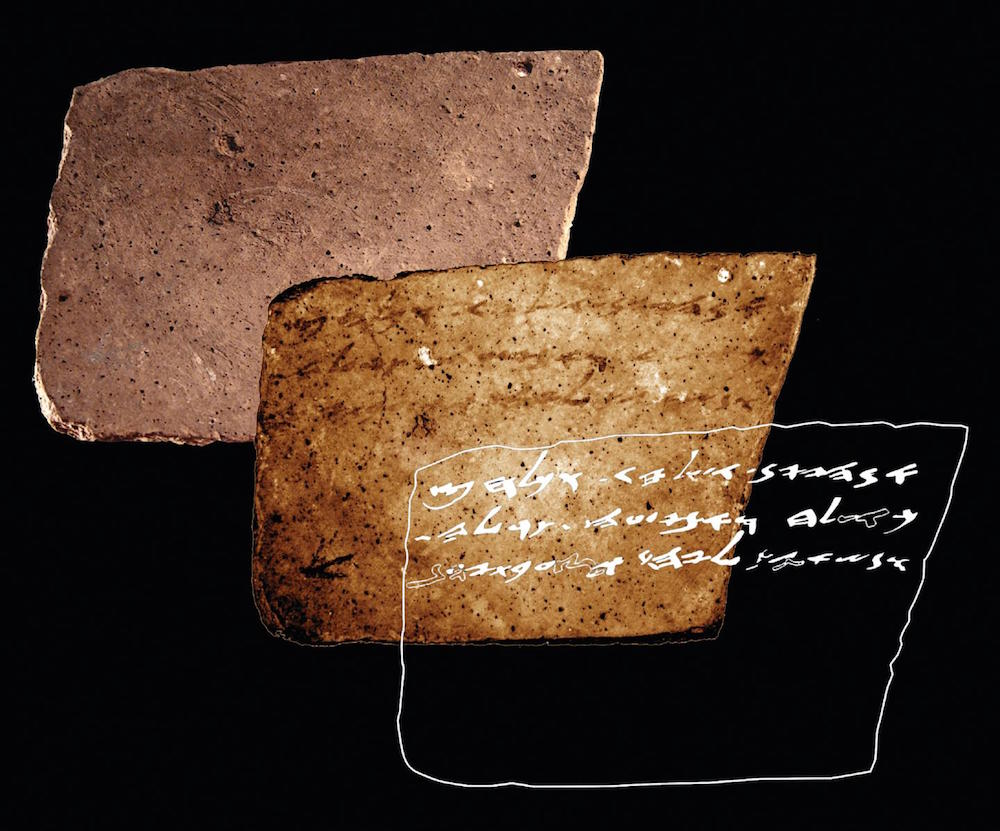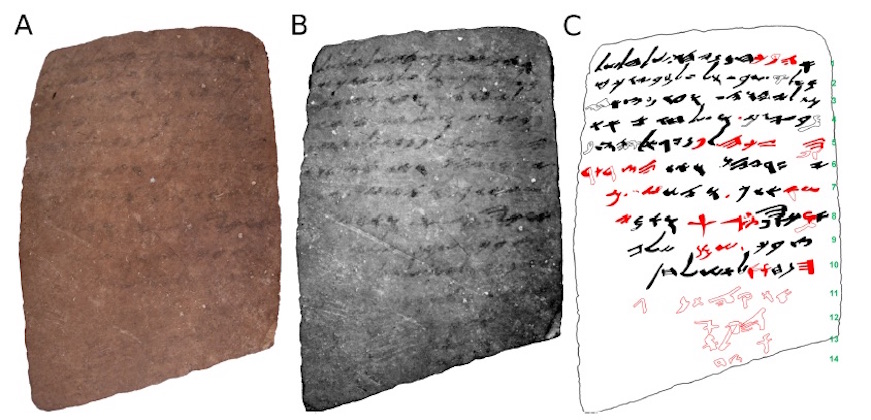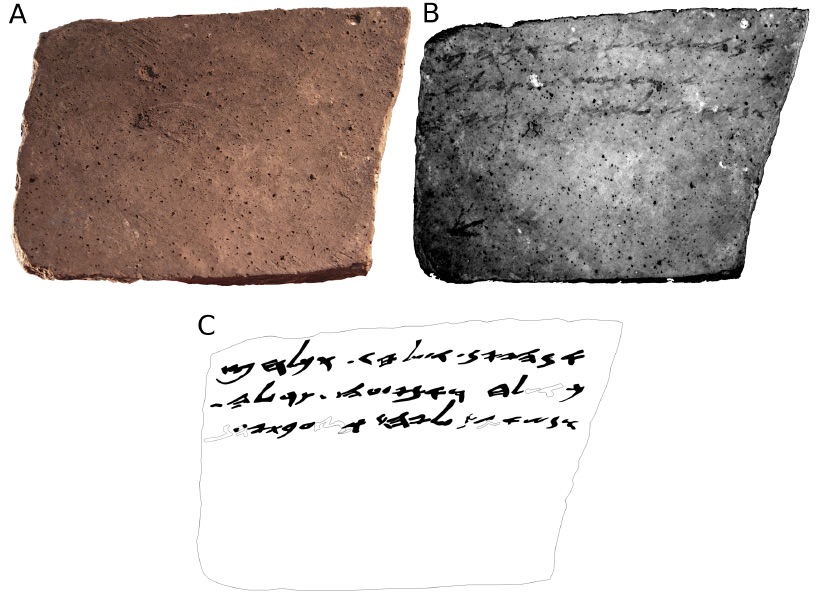Wine, Please! Ancient Pottery Inscription Requests More Drinks

A previously overlooked inky inscription on a pottery shard found in Israel calls for the delivery of more wine, according to a new study, showing that not much has changed in 2,600 years for humanity, at least when it comes to wetting our whistles.
The pottery fragment — called an ostracon, or an ink-inscribed shard — was found in 1965 at the desert fortress of Arad in Israel. The shard was in poor condition, but researchers were able to date it to around 600 B.C., right before Nebuchadnezzar, the king of Babylon, destroyed the kingdom of Judah.
After discovering the shard, researchers noticed an ink inscription on its front, which begins with a blessing of Yahweh (a Hebrew name for God), then describes money transfers. Biblical scholars and archaeologists have extensively studied this inscription, so researchers were taken aback when they found the overlooked message on the ostracon's backside. [The 25 Most Mysterious Archaeological Finds on Earth]
"While its front side has been thoroughly studied, its back was considered blank," study co-principal investigator Arie Shaus, a doctoral student of applied mathematics and archaeology at Tel Aviv University (TAU) in Israel, said in a statement.

Revealing hidden text
The research team used multispectral imaging, a technique that uses different frequencies on the electromagnetic spectrum to capture data from an image. Study co-researcher Michael Cordonsky, a physicist at TAU, noticed the scribbled note on the ostracon's backside.
"To our surprise, three new lines of text were revealed." Shaus said.
Using the results from the multispectral imaging, the team deciphered 50 characters making up 17 words on the back of the shard, which had been on display at the Israel Museum for more than 50 years.
Sign up for the Live Science daily newsletter now
Get the world’s most fascinating discoveries delivered straight to your inbox.
"The content of the reverse side implies it is a continuation of the text on the front side," study co-principal investigator Shira Faigenbaum-Golovin, a doctoral student of applied mathematics at TAU, said in the statement.
Send wine
The newly discovered and translated inscription says, "If there is any wine, send … If there is any-thing (else) you need, send (= write me about it). And if there is still … gi[ve] them (an amount of) Xar out of it. And Ge'alyahu has taken a bat of sparkling (?) wine."

"The new inscription begins with a request for wine, as well as a guarantee for assistance if the addressee has any requests of his own," Shaus said. "It concludes with a request for the provision of a certain commodity to an unnamed person, and a note regarding a 'bath,' an ancient measurement of wine, carried by a man named Ge'alyahu."
The note is "an administrative text, like most of the Arad inscriptions," study co-researcher Anat Mendel-Geberovich, an archaeologist at TAU, said in the statement. "Its importance lies in the fact that each new line, word and even a single sign is a precious addition to what we know about the First Temple period."
As for who the request was being made to, Mendel-Geberovich said that "many of these inscriptions are addressed to Elyashiv, the quartermaster of the fortress."
The finding shows the power of multispectral imaging, especially its use on artifacts that have already been studied, but might have had overlooked components, the researchers said.
"This is ongoing research," study co-researcher Barak Sober, a doctoral student of applied mathematics at TAU, said in the statement. "The future may hold additional surprises."
The study was published online June 14 in the journal PLOS ONE.
Original article on Live Science.

Laura is the archaeology and Life's Little Mysteries editor at Live Science. She also reports on general science, including paleontology. Her work has appeared in The New York Times, Scholastic, Popular Science and Spectrum, a site on autism research. She has won multiple awards from the Society of Professional Journalists and the Washington Newspaper Publishers Association for her reporting at a weekly newspaper near Seattle. Laura holds a bachelor's degree in English literature and psychology from Washington University in St. Louis and a master's degree in science writing from NYU.









